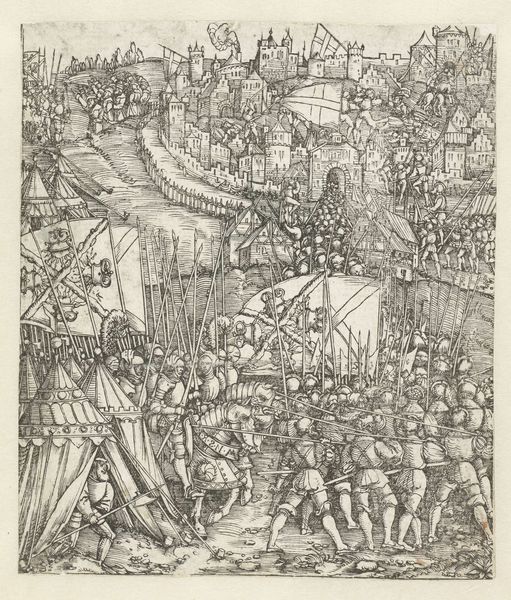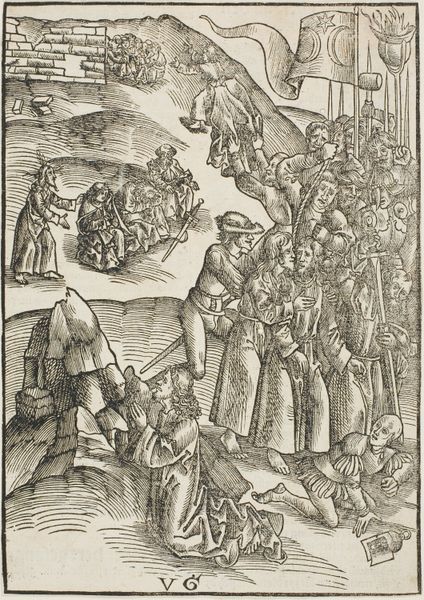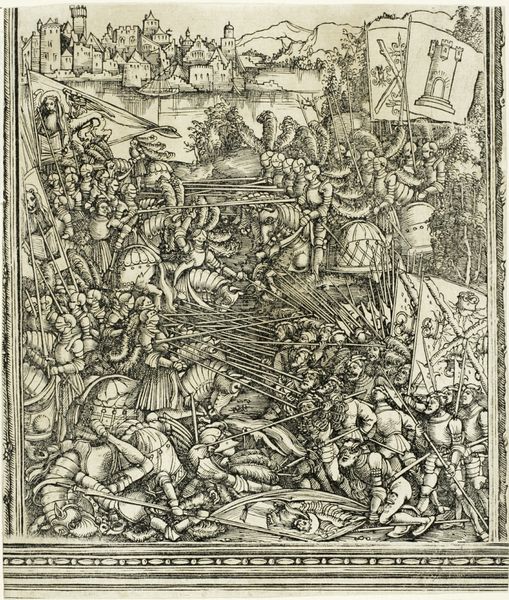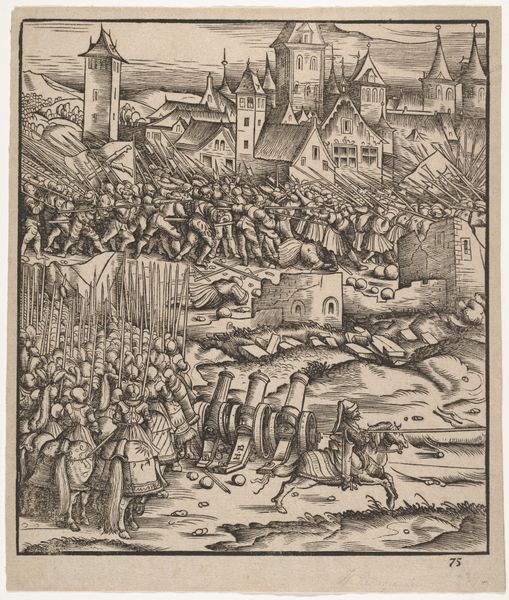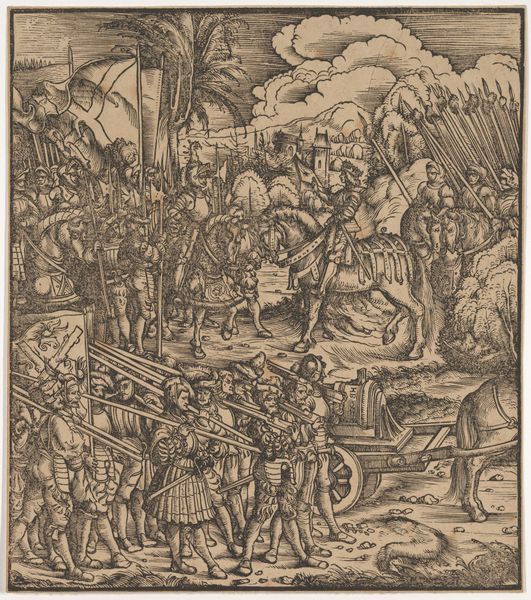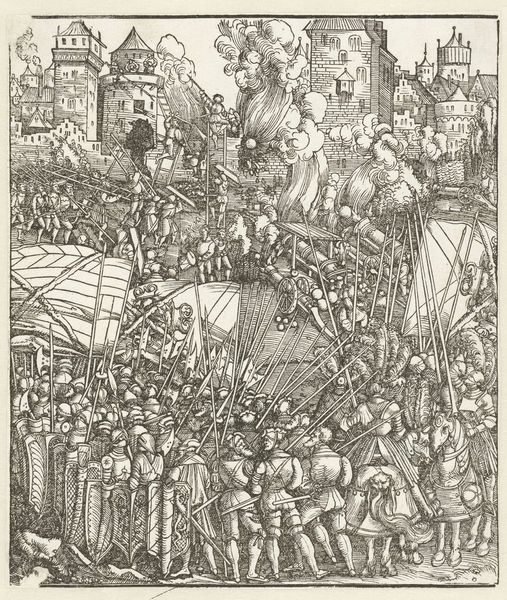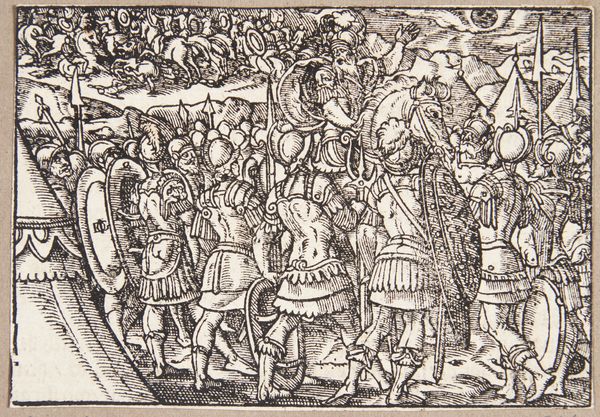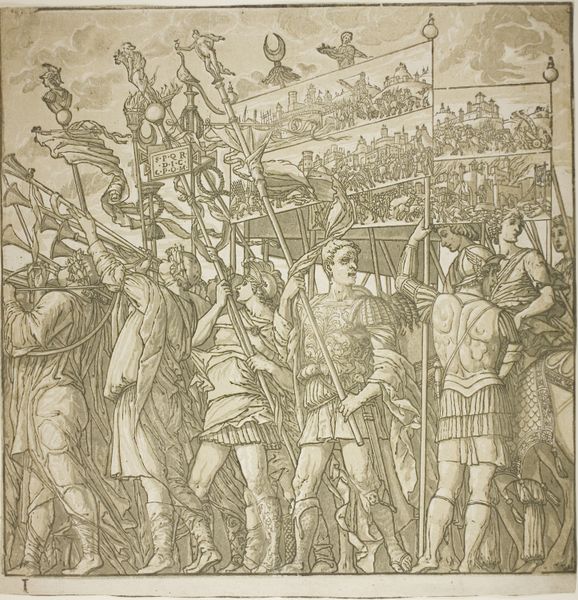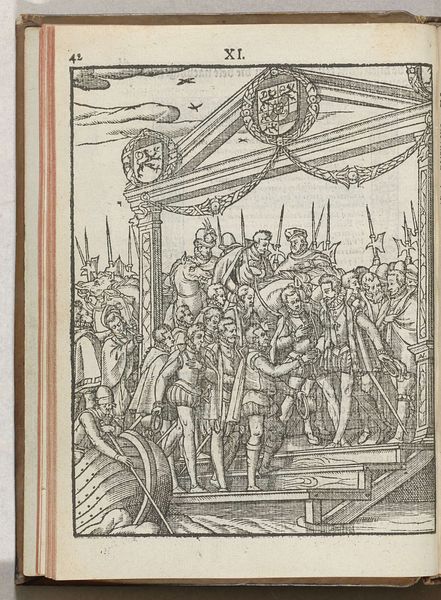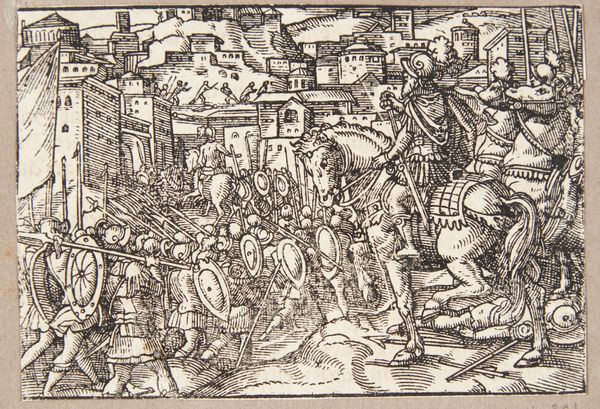
The Campaign in Hungary, from The Triumphal Arch of Maximilian I 1515 - 1517
0:00
0:00
drawing, print, paper, ink, woodcut
#
drawing
# print
#
figuration
#
paper
#
personal sketchbook
#
ink
#
woodcut
#
line
#
history-painting
#
northern-renaissance
Dimensions: 199 × 157 mm
Copyright: Public Domain
Curator: What a fascinating print! We're looking at "The Campaign in Hungary, from The Triumphal Arch of Maximilian I," created between 1515 and 1517. It's a woodcut, rendered in ink on paper. Editor: My first thought is 'claustrophobic'—the density of figures and the relentless detail... It feels like a visual overload, almost suffocating in its meticulousness. Curator: Absolutely. That density is deliberate, a key element in conveying the scale and intensity of military campaigns of the time. The print, part of a larger commission for Emperor Maximilian I, serves as propaganda, meticulously detailing his military achievements and projecting an image of imperial strength. Editor: So, this isn't just an artistic expression, it’s a carefully crafted piece of political messaging, intended for distribution and consumption to a wide audience. We're dealing with paper, ink, wood, and most crucially, labor, being put to the service of imperial power. How interesting that even the act of dissemination becomes a part of the "triumph." Curator: Precisely. Think about the skilled artisans, engravers, and printers involved. Each line is deliberately placed to emphasize the Emperor's might, his advanced military organization. I am struck by the details of the spears, armour and flags and the way these delineate the figures. The composition leads your eye upwards. Editor: That linear perspective—the way everything recedes into the background—adds to the impression of endless manpower and resources at the emperor's disposal. Even the distant city on the horizon seems to buckle under the weight of this advancing force. I cannot stop thinking about the labour this entailed and its contribution to material culture! Curator: Indeed! This wasn't simply about recording an event. It was about constructing and disseminating a very particular image of imperial authority. A narrative constructed for consumption, in its own way as material as the wood and paper of the work itself. Editor: Examining the context in this light truly enriches the appreciation for it, going beyond a simple art experience to considering the intricate socio-economic context within which it was produced and consumed. Curator: Precisely. It allows us to consider the layers of meaning interwoven into the fabric of the work.
Comments
No comments
Be the first to comment and join the conversation on the ultimate creative platform.
